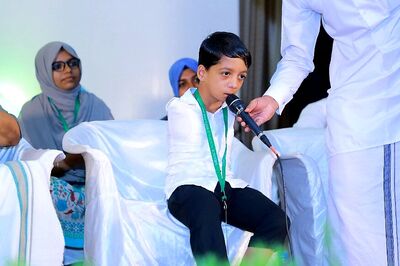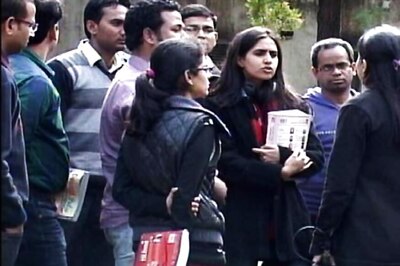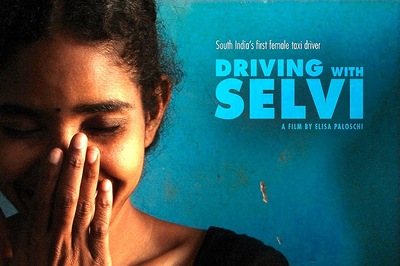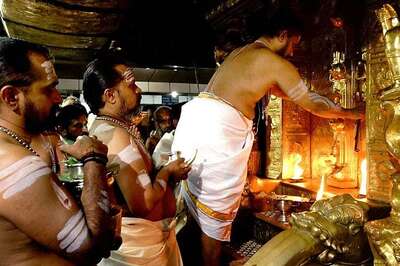
views
April 2, 2011 will go down as one of the most significant dates in India’s sporting history. That magical night was the culmination of an effort that began under the tutelage of the Indian cricket team’s coach, Gary Kirsten, and its captain, MS Dhoni, from the time they paired up in 2007 to steer India from a team prone to capitulation to a band of world beaters.
That result ended a 28-year draught of lifting the World Cup and with it lifted the nation’s cricketers to a new height. Winning the inaugural ICC World Twenty20 in 2007 and scaling the peaks of the Test rankings were special, but winning the World Cup was a dream harboured by the likes of Sachin Tendulkar since he debuted on November 15, 1989. This was what Indian cricket teams had aspired for since Kapil’s Devils raised the trophy on the Lord’s balcony in 1983, and it helped erase the bitter memories of 1992, 1996, 1999 and, most famously, 2007.
Twenty-eight years on from the match that transformed the history of world cricket, India recaptured the crown in their very own back yard. They had been expected to do so, being a form team and co-hosts of the tournament, but the manner in which they usurped Sri Lanka at the Wankhede Stadium was stirring. Their performance in the final was a magnificent coming together of the unfinished points that had been a feature of their campaign until then.
Gautam Gambhir had until then scored three half-centuries in the tournament without stamping his authority. His 97 in the pinnacle was his most dominating innings as India recovered from 31 for 2 to clinch victory by six wickets. Dhoni had until then contributed a personal best of 34, but having promoted himself he played the innings of his career. The image of Dhoni hitting the winning runs with a six is indelible.
Central to India’s run to the final were, most importantly, the Player of the Tournament, Yuvraj Singh. Coming into the World Cup Yuvraj had been dogged by injury and poor form, his image as a cricketer tattered and taunted at. He answered his critics in stunning manner: 362 runs at 113, 15 wickets and four Man-of-the-Match awards. Throughout the competition he was the fulcrum of India's batting; the centre that has held it together through top-order wobbles and Powerplay collapses.
He was supported by Virender Sehwag, Virat Kohli, Sachin Tendulkar and Suresh Raina, who all played key innings. Zaheer Khan ably led the bowling attack –his three consecutive maiden overs in the final banished the ghost of the 2003 final – and there were useful hands from Munaf Patel, R Ashwin, Harbhajan Singh and Ashish Nehra.
The entire narrative of the tournament was about India, because they earned their success the hard way while living up to the massive hype and expectancy and moving past 28 years of failure. When they played, everyone watched. They did not do dull contests – how can we forget the tie against England? – and that they knocked out four-time holder Australia in the quarter-finals and archrivals Pakistan in the semis added to their allure.
At the end of the day, their resounding success made for arguably the best World Cup of all time, while helping to sweeten the bitterness of the pre-tournament chaos around ticket sales and the lingering feeling that the whole spectacle was too long. April 2 has rightfully earned its place in the pantheon of India sport.
Flash forward to October 30, 2011. The inaugural Indian Grand Prix at the Buddh International Circuit in Greater Noida had just concluded and its winner, Sebastian Vettel stood beaming atop the podium after securing his 11th win of the season.
"All in all it was great to be here, a great circuit, which is what we judge the most," said the German. "When my engineer came on the radio and said '12 laps to go' I was surprised and I thought, 'That went by quickly.' It's a good sign because it means you enjoy the circuit. Having had debuts in different places the last couple of years, this will be one of the races that settle in very quickly and we will all be happy to come back."
Vettel’s praise echoed that of most of the other top international drivers, and was a tribute to the hard work taken to make the event a possibility and a definite success. After the fiasco that marred the build-up to the Commonwealth Games in 2010, the success of the Indian Grand Prix was a shot in the arm for India as a sporting destination.
The race itself wasn’t a great one, and there were design flaws in the paddock and issues of transportation and timing. But at the end of what was a truly unique race weekend, the consensus was that India had more than earned the right to label its first race a qualified success. The Buddh International Circuit is an impressive venue, of that there is no doubt. The facility, built by a corporate that overcame massive odds, is an achievement the country can justifiably be proud of. Of greater significance is the fact that it has paved the way for motorsport in India to step up to the next level.
In a year which had many forgettable incidents in India, the World Cup triumph and the success of the Indian Grand Prix were two peaks on the landscape.
####




















Comments
0 comment